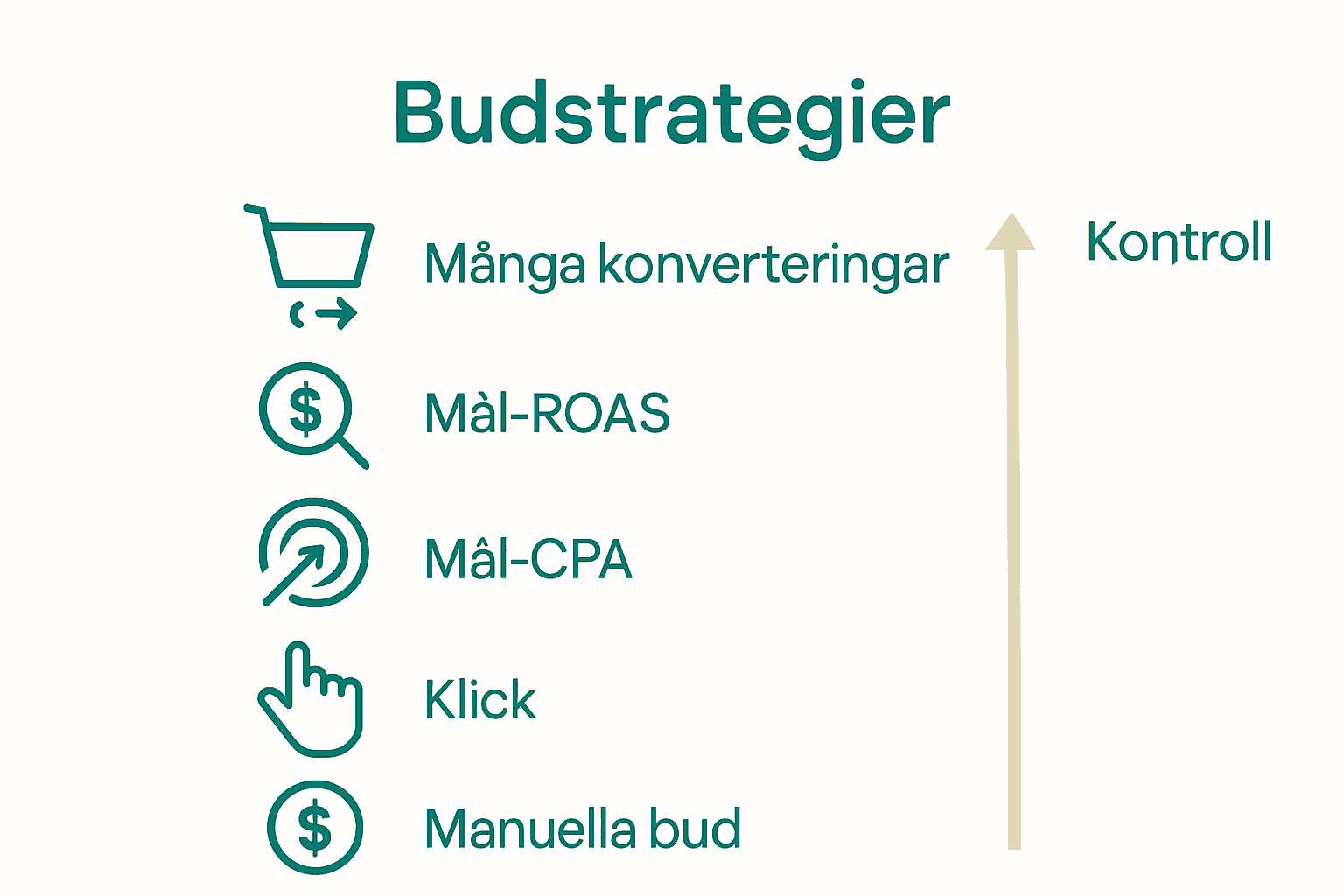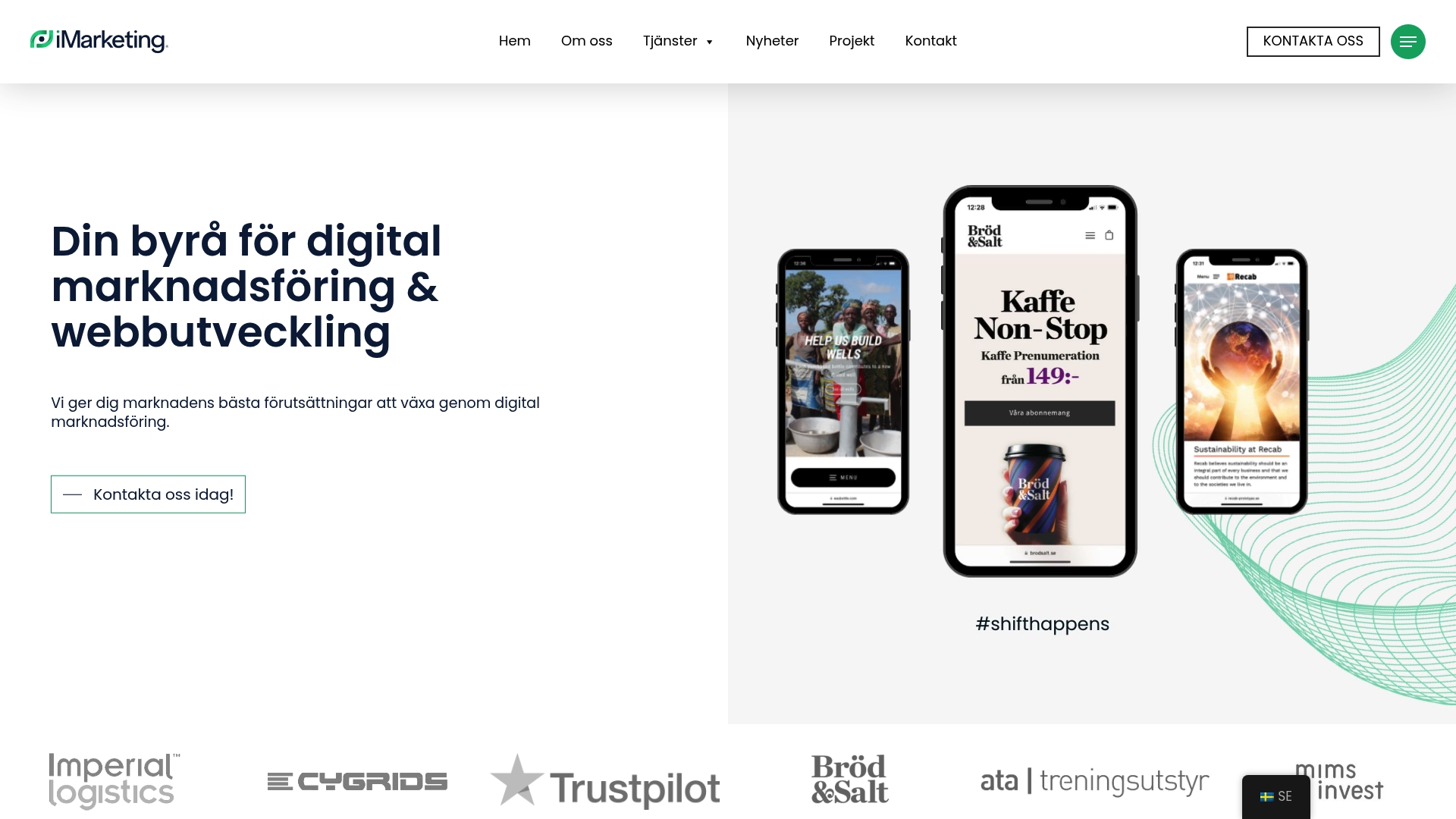Did you know that businesses that actively optimize their Google Ads can increase their conversions by up to 50 percent? However, many marketers miss important steps when setting up their campaigns and lose both time and money. A well-thought-out start with the right strategy can make the difference between modest results and truly profitable advertising. Here you will get practical insights to succeed with your Google Ads from the ground up.
Quick summary
| Key points | Explanation |
|---|---|
| 1. Choose the right network for advertising | Focus on networks like the Search Network to reach active users who are searching for your services. |
| 2. Define specific goals and target groups | Analyze customer data and set clear goals for the campaign, such as increased sales with 20%. |
| 3. Create engaging and relevant ads | Use Responsive Search Ads with unique messages to capture the interest of your target audience. |
| 4. Optimize budget and bid strategy smartly | Choose a bid strategy based on specific goals to maximize return and avoid large adjustments. |
| 5. Review and track results continuously | Implement conversion tracking and analyze key metrics to optimize ad performance. |
Table of contents
- Step 1: Prepare your Google Ads account professionally
- Step 2: Define goals and choose the right target audience
- Step 3: Create engaging and relevant ads
- Step 4: Optimize budget and bid strategy smartly
- Step 5: Continuously review and track results
Step 1: Prepare your Google Ads account professionally
Getting started with Google Ads is about more than just creating an account. It's about building a strategic foundation that allows you to reach the right customers efficiently and cost-effectively.
Start by choosing the right network for your marketing goals. According to expert research, it’s crucial to focus on specific networks that fit your needs. For businesses focused on lead generation, the Search Network is specifically recommended because it directly targets users who are actively searching for your services.
The next step is to define your geographic and linguistic audience. Use Google's targeting settings to limit your ad delivery to areas where your potential customers are located. This ensures that every penny you spend on advertising is targeted.
Then create thematic ad groups with closely related keywords. According to research from marketing experts A granular structure is the key to success. Small ad groups with closely related keywords improve your Quality Score, increase click-through rate, and lower your cost per conversion.
Pro tip: Avoid broad keywords. The more specific and relevant your ad group is, the better results you'll get.
Once you’ve completed these preparations, you’ll have created a solid foundation for your Google Ads campaigns. In the next step, we’ll dive into how to choose and optimize your specific keywords for maximum relevancy.
Step 2: Define goals and choose the right target audience
Defining goals and choosing the right audience is crucial to the success of your Google Ads campaigns. It's not just about reaching a lot of people, but about reaching the right people with the right message.
According to research data A target audience is a specific consumer group identified as the primary recipient of your advertising. For digital ads, this means you need to be extremely precise in your approach.
Start by analyzing your existing customer data. Look at demographic factors like age, gender, income, geographic location, and interests. For B2B companies, we recommend experts in lead generation to base your decisions on past Cost Per Acquisition (CPA) data. This will help you create more targeted advertising campaigns.
When defining your goals, it's important to be specific. Do you want to increase sales by 20% or generate 50 new leads per month? The clearer your goals are, the easier it will be to measure and optimize your results.

Pro tip: Make sure your budget is at least 10 times your CPA target for the best possible performance.
In the next step, we will delve into how to create ads that really speak directly to your chosen target audience and get them to take action.
Step 3: Create engaging and relevant ads
Creating ads that truly capture attention and drive conversions is an art that requires strategy and precision. You want to not only be seen, but also inspire potential customers to take action.
According to recent research reports Responsive Search Ads (RSA) is the key to successful Google Ads campaigns. Utilize all available headlines and description fields and be selective with 'pinning' to ensure maximum flexibility and relevance.
Focus on creating unique and impactful messages that directly address your customers’ needs and pain points. Each headline and description should be distinct but complement each other in a way that creates a cohesive story.
Digital marketing experts emphasizes the importance of mobile-friendly landing pages. Make sure your page loads quickly, has clear calls to action (CTAs), and includes credibility markers like customer reviews or certifications.
Pro Tip: Implement proper conversion tracking with Google Analytics 4 to continuously understand and improve your ads' performance.
In the next step, we'll delve into how to optimize and adjust your ads to ensure maximum return on your marketing investment.
Step 4: Optimize budget and bid strategy smartly
When it comes to Google Ads, your budget strategy is crucial. It's not just about how much money you spend, but how smartly you allocate every penny for maximum return.
According to marketing experts There are several strategies to choose from: Manual CPC for full control, Maximize Clicks for traffic generation, Maximize Conversions for conversion optimization, Target CPA for cost efficiency and Target ROAS for revenue maximization.
Latest surveys shows that no one-size-fits-all bidding strategy works for everyone. Smart Bidding is especially effective when your account generates at least 50 conversions within 30 days. This gives the algorithms enough data to make intelligent decisions.
Start by defining your specific goals. Do you want to increase sales, generate leads, or build brand awareness? Each goal requires a customized strategy.
Pro tip: Avoid excessive budget adjustments that can disrupt ad performance. Small adjustments provide better control and more stable results.
In the next step, we'll explore how to continuously monitor and adjust your ads for optimal performance.
Here's an overview of different Google Ads bidding strategies and when they're best suited:

| Bidding strategy | Recommended for | Control level |
|---|---|---|
| Manual CPC | Full control over bids | High |
| Maximize Clicks | Traffic increase | Low |
| Maximize Conversions | More business opportunities | Low |
| Target CPA | Cost-effectiveness | Means |
| Target ROAS | Revenue optimization | Means |
Step 5: Continuously review and track results
Understanding and analyzing your Google Ads results is crucial to continuously improving your marketing strategy. It’s no longer enough to just run ads and hope for the best.
According to digital marketing experts, it is critical to set up Google Ads conversion tracking and integrate Google Analytics 4. This gives you deep insights into user behavior and enables data-driven decisions.
Marketing researchers emphasize the importance of value-based tracking. Implement conversion metrics that go beyond simple clicks and measure the actual revenue from each ad.
Focus on key metrics like conversion rate, cost per conversion, and return on ad revenue. Identify which keywords and ads are generating the most value and don't be afraid to adjust your strategy accordingly.
Pro tip: Conduct A/B testing on ads and landing pages regularly to continuously optimize performance.
In the next step, we'll explore how you can scale and further develop your successful ad campaigns.
Take the next step: Get more customers with expert help from iMarketing.se
You have now learned how strategic advertising on Google requires both careful planning and ongoing optimization. Do you find it difficult to build structured ad groups, choose the right keywords, or optimize your budget smartly? Many entrepreneurs find that the time and knowledge are not enough to create result-driven campaigns with high conversion and clear traceability. Let us take care of the technology and strategy so you can focus on your customers and growth.

Do you want to see evidence of how our web development and digital marketing services generates more leads and higher sales for Swedish companies? Explore our success stories and see how we maximize the value of every click and advertising dollar. Try it out right away by visiting iMarketing.se and book a free consultation. Take control of your Google Ads and let us guide you towards faster growth – get in touch today to not miss out on new business opportunities!
Frequently Asked Questions
How do I create a Google Ads account?
To get started, visit the Google Ads website and click 'Get Started Now'. Follow the instructions to enter your business details and create an account. This will give you access to the tools to create ads and manage campaigns.
What does it mean to define goals and choose the right audience in Google Ads?
It's about clearly identifying the type of customers you want to reach and what specific goals you have for your ads. Analyze existing customer data and define goals like 'increase sales by 20%' to give concrete direction to your campaigns.
How do I create engaging ads for Google Ads?
Focus on writing clear and relevant headlines that address your customers' needs. For example, use Responsive Search Ads to formulate different messages and maximize relevance, which can increase your click-through rate by up to 301%.
What bidding strategy should I use in my Google Ads campaigns?
Choose a bid strategy based on your goals, for example, if you want to optimize for conversions, consider 'Maximize Conversions'. Evaluate the results and adjust the strategy as needed, which can lead to a cost reduction of 15-20% per conversion.
How do I track the results of my Google Ads campaigns?
Set up Google Ads conversion tracking and integrate it with Google Analytics to monitor and analyze campaign results. Focus on measuring key metrics like conversion rate and cost per conversion to optimize your ads against your goals.
How often should I review and optimize my Google Ads?
Conduct a review of your campaigns at least once a month to identify areas for improvement. This can help you adjust your strategy and optimize campaigns to get a better return on your advertising.


